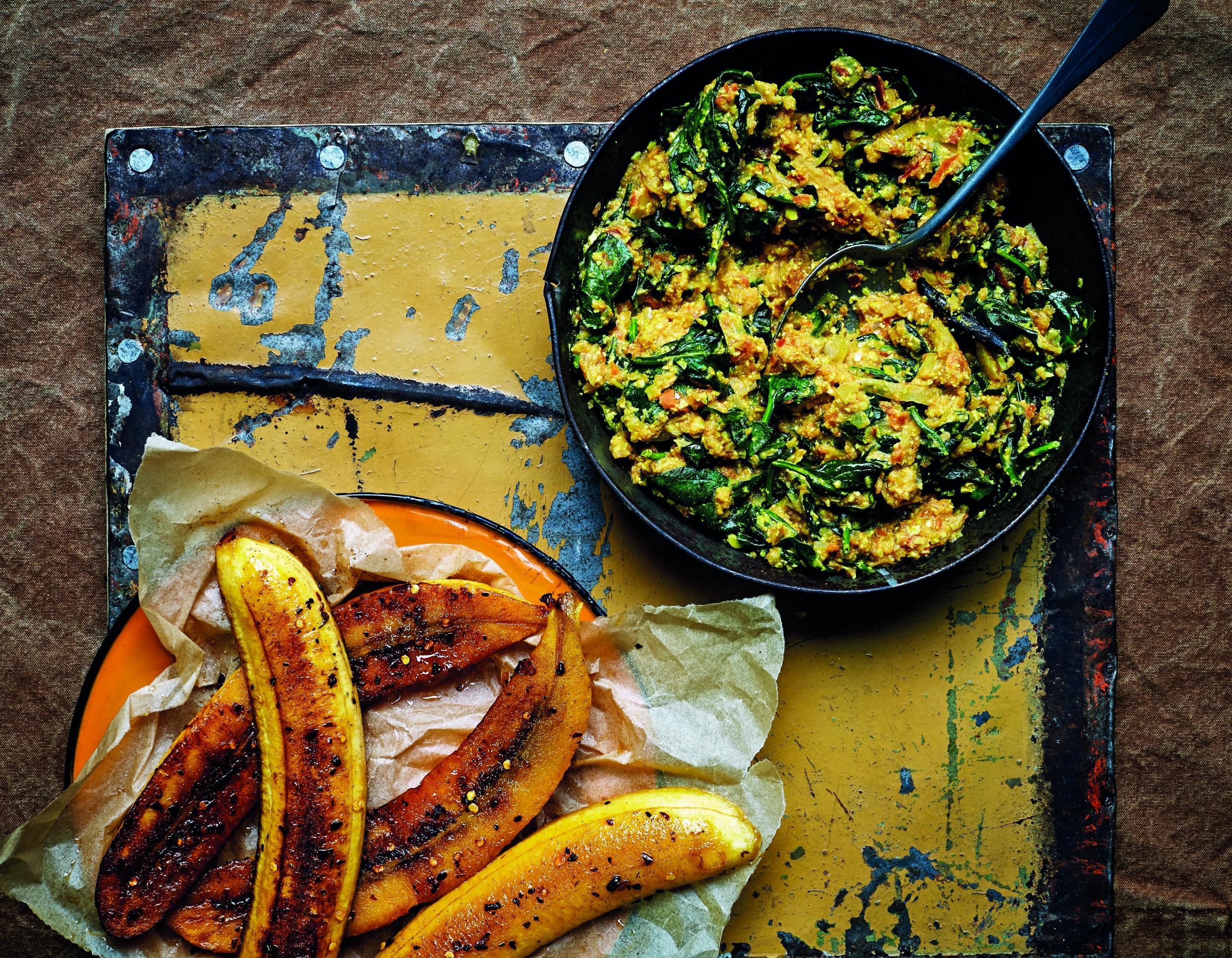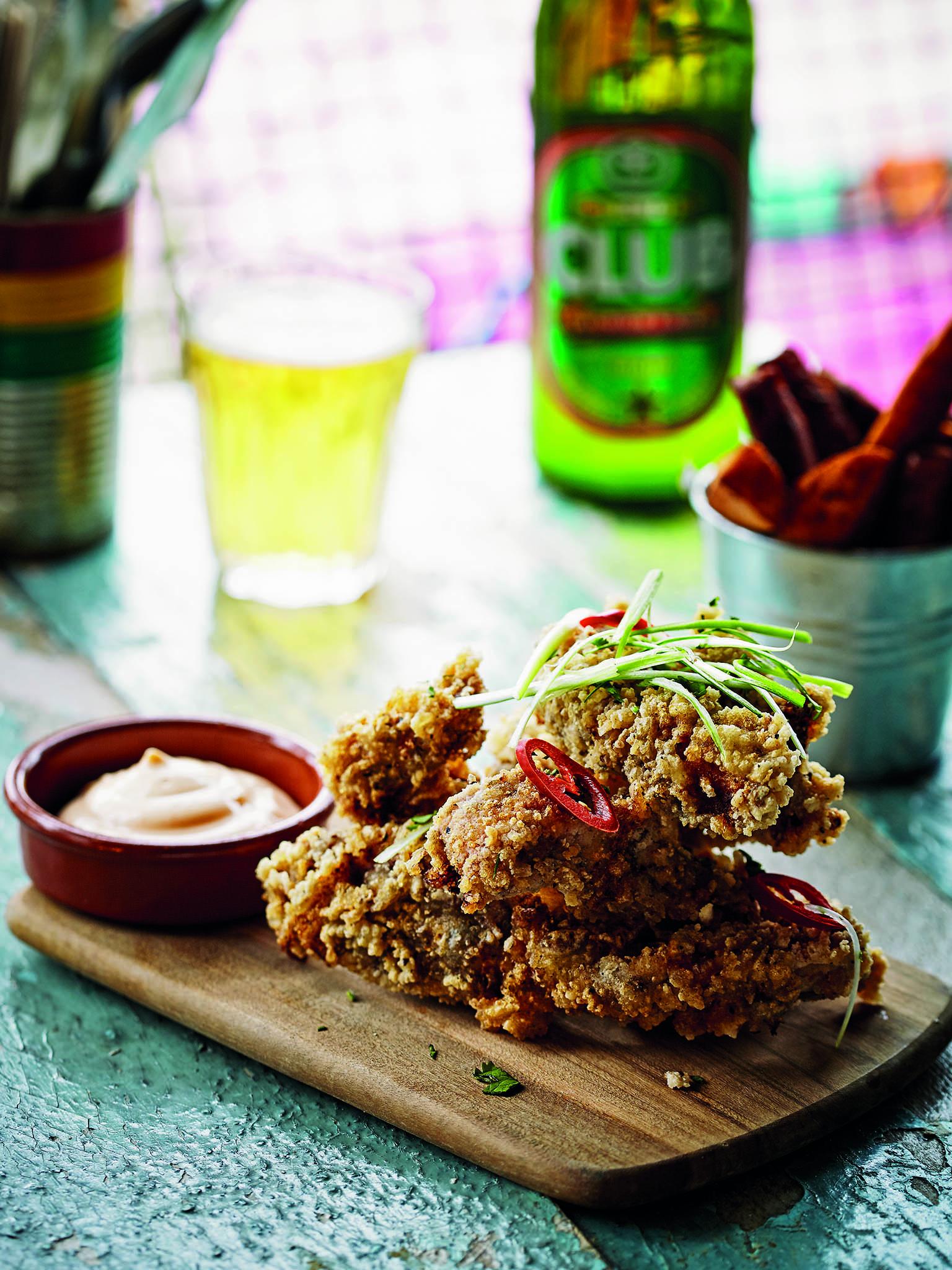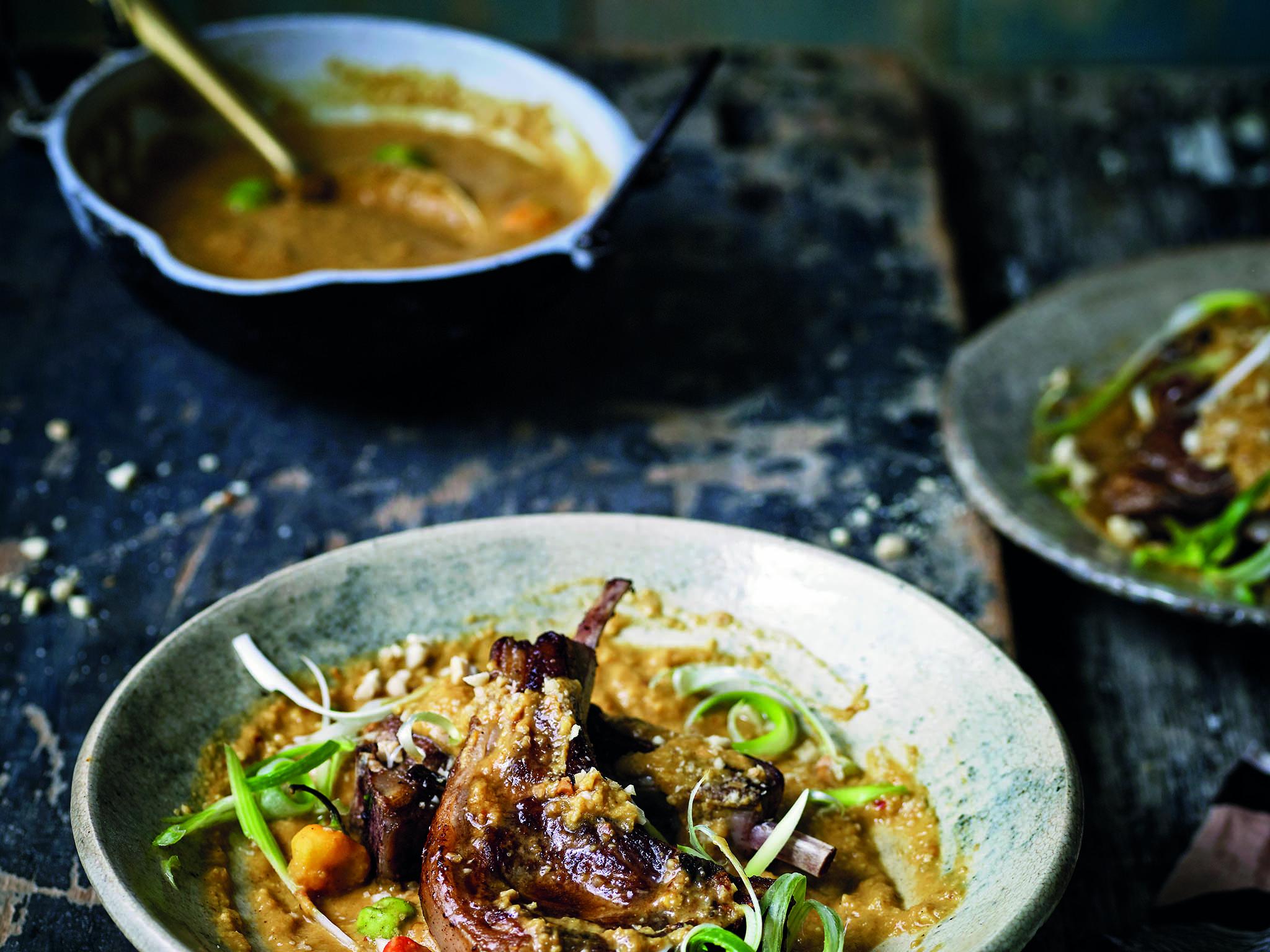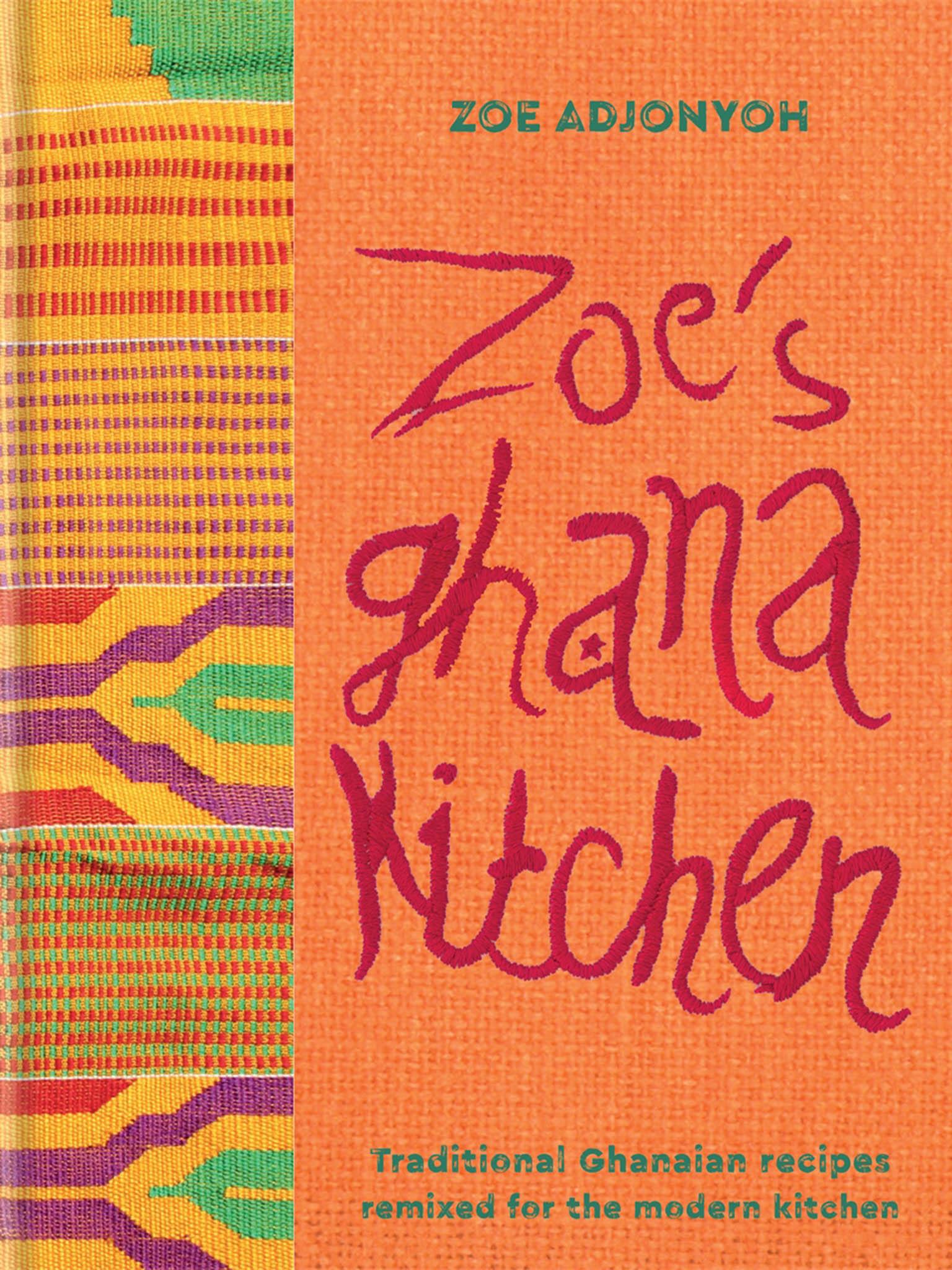Zoe's Ghana Kitchen recipes: From jollof fried chicken to spinach agushi curry
Creating a contemporary remix on traditional Ghanaian recipes from across the country, Zoe Adjonyoh makes it accessible as possible for everyone to recreate the rich and smooth spices that coat seafood and brighten hearty stews and colourful salads

Your support helps us to tell the story
From reproductive rights to climate change to Big Tech, The Independent is on the ground when the story is developing. Whether it's investigating the financials of Elon Musk's pro-Trump PAC or producing our latest documentary, 'The A Word', which shines a light on the American women fighting for reproductive rights, we know how important it is to parse out the facts from the messaging.
At such a critical moment in US history, we need reporters on the ground. Your donation allows us to keep sending journalists to speak to both sides of the story.
The Independent is trusted by Americans across the entire political spectrum. And unlike many other quality news outlets, we choose not to lock Americans out of our reporting and analysis with paywalls. We believe quality journalism should be available to everyone, paid for by those who can afford it.
Your support makes all the difference.Complete with a detailed ingredients guide, a Ghanaian soundtrack and the story of her food journey through her home country, Zoe's book makes what at first could be overwhelming easy to recreate at home with suggested substitutions and useful tips.
Spinach agushi curry
*Here’s my twist on traditional Kontomire or nkontomire stew – a delicious vegan spinach curry, to which you can add extra steamed veg of your choice to make it into a more substantial meal.
1 tablespoon coconut oil
1 small onion, thinly sliced
2 teaspoons curry powder
1 teaspoon chilli powder
350ml uncooked Chalé sauce * (see below)
100g or about 2 heaped tablespoons agushi (dried ground melon seeds)
8 guinea peppers, crushed (optional)
juice of 1 lime
150–300ml water or good-quality vegetable stock, if required
200g baby leaf spinach
1 teaspoon sea salt
1 teaspoon coarsely ground
black pepper
Grilled plantain (optional)
4–6 ripe plantains
1 tablespoon ground ginger
½ tablespoon dried chilli flakes
sea salt
coconut oil (melted) and olive oil, for drizzling
Heat a large, heavy-based saucepan and add the coconut oil. When it has melted, add the onion and sauté over a medium heat for a few minutes until softened, then add the curry and chilli powders and stir well. Stir in the chalé sauce and simmer over a low heat for 20 minutes.
Gently stir in the agushi, using the back of a wooden spoon to break down any lumps that may form – the sauce should start to turn creamy and resemble scrambled eggs. Add the guinea peppers, if using, and the lime juice. Leave to simmer over a medium heat for a further 10 minutes. If the sauce becomes too thick, add the water or vegetable stock a little at a time to loosen it. The colour of the stew will have changed from pink to a mustard colour.
Stir in the spinach and sea salt and black pepper, then simmer gently until the spinach has wilted. Meanwhile, prepare the grilled plantain, if making. Preheat the grill to medium-high. Using a sharp knife, peel the plantains by cutting the tips off each end and slicing through the skin lengthways (avoid cutting into the flesh), then use your hands to remove the skin.
Cut the plantains in half lengthways. Rub with the ground ginger, chilli flakes and sea salt, and drizzle with coconut or olive oil. Grill for 12–15 minutes, turning over halfway through. Serve alongside the spinach curry.
Chalé Sauce *
Makes 500 ml
This basic recipe is based on my dad’s everyday cooking sauce. He would whip this up and then literally throw in any type of meat, fish or protein, but it was always tasty.
You can just blend the ingredients and store the uncooked sauce for later use, or cook it and then leave to cool – either way it saves time when making many of the recipes in this book. I make a big batch of this at least once a week – you can easily double the quantity if you want to make a bigger batch, although it’s not necessary to increase the Scotch Bonnet unless you like it extra-extra-hot!
400g can tomatoes or 250g fresh tomatoes
30g or 2 tablespoons tomato purée
1 onion, roughly chopped
5cm piece fresh root ginger, grated (unpeeled if organic)
1 red Scotch Bonnet chilli, deseeded
1 tablespoon dried chilli flakes
1 teaspoon sea salt
3 garlic cloves (optional)
To cook
1 tablespoon sunflower oil
1 onion, finely diced
1 teaspoon curry powder
1 teaspoon extra-hot chilli powder
Place all the ingredients except the ‘to cook’ ones in a blender and blend together until you have a fairly smooth paste. This is your uncooked chalé sauce. For cooked chalé sauce, heat the oil in a heavy-based saucepan, add the onion and sauté over a medium heat for a few minutes until softened. Then add the curry powder and chilli powder and stir thoroughly to coat the onion evenly. Add the blended tomato mixture and simmer gently for 35–40 minutes.
Use straight away, or leave to cool then store in an airtight container in the fridge for up to three days, or freeze for future use.

Jollof fried chicken
By far the most popular dish on both our street-food and restaurant menus is this super-crispy and succulent fried chicken recipe – I really shouldn’t be giving away the secret!
Serves 4
2 tablespoons Jollof dry spice mix **
½ teaspoon crushed sea salt
½ teaspoon coarsely ground black pepper
1 tablespoon rapeseed oil
4 boneless, skinless chicken breasts, cut into strips
250ml buttermilk
500ml–1 litre vegetable oil, for deep-frying
Coating
150–200g cornflour
½ teaspoon coarsely ground black pepper
½ teaspoon crushed sea salt
1 teaspoon ground nutmeg
Mix the jollof dry spice mix, sea salt and black pepper with the rapeseed oil in a large bowl. Add the chicken strips and buttermilk and turn to coat them all over. Cover the bowl with clingfilm and leave to marinate in the fridge for at least 1–2 hours, preferably overnight.
Heat the oil in a deep-fat fryer (the safest option) or heavy-based, deep saucepan filled to just under half the depth of the pan to 180–190°C (350–375°F) or until a cube of bread browns in 30 seconds. Meanwhile, put the cornflour in a separate bowl with the seasoning and nutmeg and mix well. Dip each chicken strip into the seasoned cornflour to coat evenly – try to do 4 or 5 pieces in quick succession, as you need to drop them into the hot oil straight away.
Fry the chicken, in batches, for no more than 3–4 minutes to keep them succulent and juicy yet cooked through, and golden and crispy but not burnt. Remove from the oil and drain on kitchen paper, keeping the cooked chicken hot while you fry the rest. It’s that easy – the best fried chicken you’re ever going to eat!
Jollof dry spice mix**
Makes about 190g
25g ground ginger
25g garlic powder
20g dried chilli flakes
35g dried thyme
25g ground cinnamon
15g ground nutmeg
15g ground coriander
¼ teaspoon cooking salt
¼ teaspoon freshly ground black pepper scant
1 teaspoon dried ground prawn/shrimp or crayfish powder (optional)
Mix all the ingredients together in a bowl. Store in an airtight container in a cool, dark place and use within a few months.
Whole grilled tilapia
Serves 4
Tilapia is the most common freshwater fish in Ghana, its meaty flesh providing a substantial meal. This recipe is based on a very traditional style of cooking tilapia that can be found all across Ghana. But if the idea of looking your dinner in the eye is intimidating, you can use tilapia fillets instead.
2 fresh tilapia, scaled, gutted and washed
lime wedges
Marinade
1 white onion, grated
1 tablespoon rapeseed oil
5cm piece fresh root ginger, grated (unpeeled if organic)
1 garlic clove, very finely chopped
2 green kpakpo shito (cherry) chillies, deseeded and finely diced, or substitute green habanero chillies
juice of 1 lime
2 tablespoons ground grains of paradise, or substitute
½ teaspoon ground mace or nutmeg
½ teaspoon dried chilli flakes
½ teaspoon ground hot pepper, or substitute cayenne pepper
sea salt and freshly ground pepper, to taste
Using a sharp cook’s knife, remove the gill coverings and hard fins from the tilapia – this is a messy job, so it’s worth asking your fishmonger to do it for you. Carefully cut three evenly spaced diagonal slashes into either side of the fish – tilapia skin is very thick, so you’ll need a firm, steady hand. Place the prepared fish in a dish. Mix all the ingredients for the marinade together in a bowl or place in a blender or food processor and blend to a smooth paste.
Pour the marinade over the fish, reserving a small amount for basting, and rub into the slashes and inside the cavity of each fish. Cover the dish with clingfilm and leave the fish to marinate in the fridge for at least 1 hour, preferably overnight.
Remove from the fridge a few minutes before you’re ready to cook and preheat the grill to medium-high. Place the fish on a baking tray lined with foil and cook under the grill for 25 minutes (add an extra 3–5 minutes if the fish are particularly large or thick) until nicely browned and cooked through, turning and basting with the reserved marinade halfway through the cooking time.
Serve with Green Kpakpo Shito Salsa and Banku or plain boiled rice, along with lime wedges for squeezing over.

Lamb cutlets with peanut sauce
This is another simple way to re-spin my favourite basic peanut sauce, this time teaming it with some juicy lamb cutlets or chops. Simply reheat the sauce if you’ve pre-made it, or have some left over from another recipe, and spoon over the lamb when it’s cooked.
Serves 4
8 lamb cutlets or chops, about 2cm thick
1 quantity Peanut Sauce
Marinade
3 tablespoons rapeseed oil or groundnut oil
2.5cm (1-inch) piece fresh root ginger, finely grated (unpeeled if organic)
1 tablespoon cayenne pepper
1 teaspoon crushed sea salt
1 teaspoon coarsely ground black pepper
To garnish
a few roughly chopped roasted peanuts
sprinkle of finely sliced spring onion
Place the lamb cutlets or chops in a dish. Mix all the marinade ingredients together in a bowl, pour over the lamb and rub the mixture thoroughly into the meat, coating it all over. If you have time, cover the dish with clingfilm and leave to marinate in the fridge for one hour. Meanwhile, prepare the peanut sauce, or reheat it if you have pre-made a batch.
Take the lamb out of the fridge and leave it to return to room temperature for a few minutes while you heat a griddle pan over a high heat until very hot. Add the lamb cutlets or chops – they should sizzle on contact – and then reduce the heat slightly. Cook the meat without disturbing it (see tip below), allowing it to sear evenly and obtain even griddle marks, then flip and repeat. (If you move the meat around during the cooking process, it will be likely to stick to the pan and won’t cook evenly.)

Remove the lamb from the pan and leave to rest for one minute before transferring to warmed serving plates. Pour 1–2 tablespoons of the peanut sauce over each of the cutlets or chops, then add a little garnish of chopped roasted peanuts and finely sliced spring onion. Serve with rice and Simple Fried Plantain, with a green salad on the side.
TIP: Cooking times for the lamb cutlets will vary depending on their thickness. As a guide, cook for 2–3 minutes if you want your meat pink or 4–5 minutes if you prefer it well-done.
Zoe’s Ghana Kitchen by Zoe Adjonyoh. Published by Mitchell Beazley, £25 . Photography by Nassima Rothacker (octopusbooks.co.uk)
Join our commenting forum
Join thought-provoking conversations, follow other Independent readers and see their replies
Comments